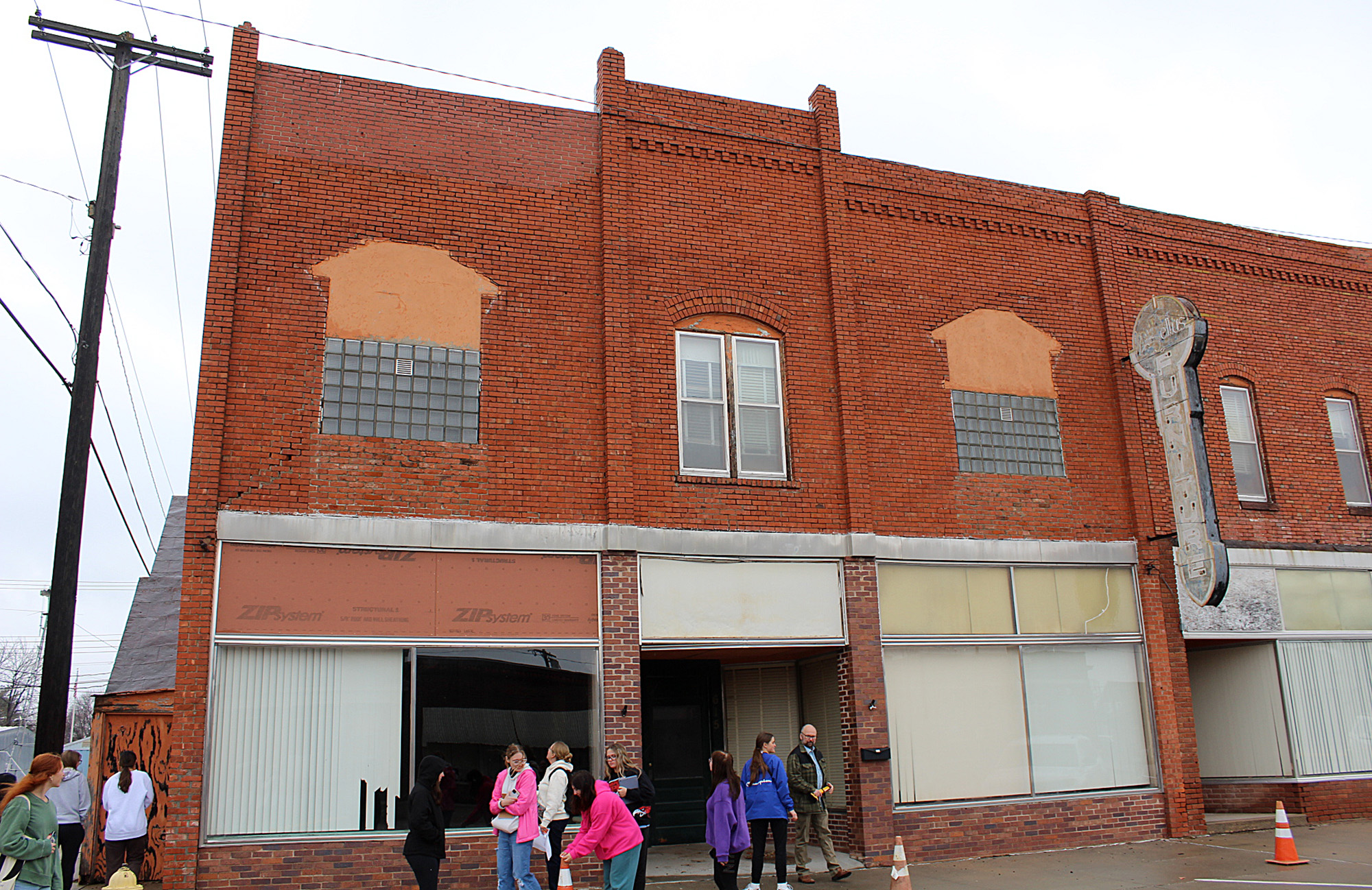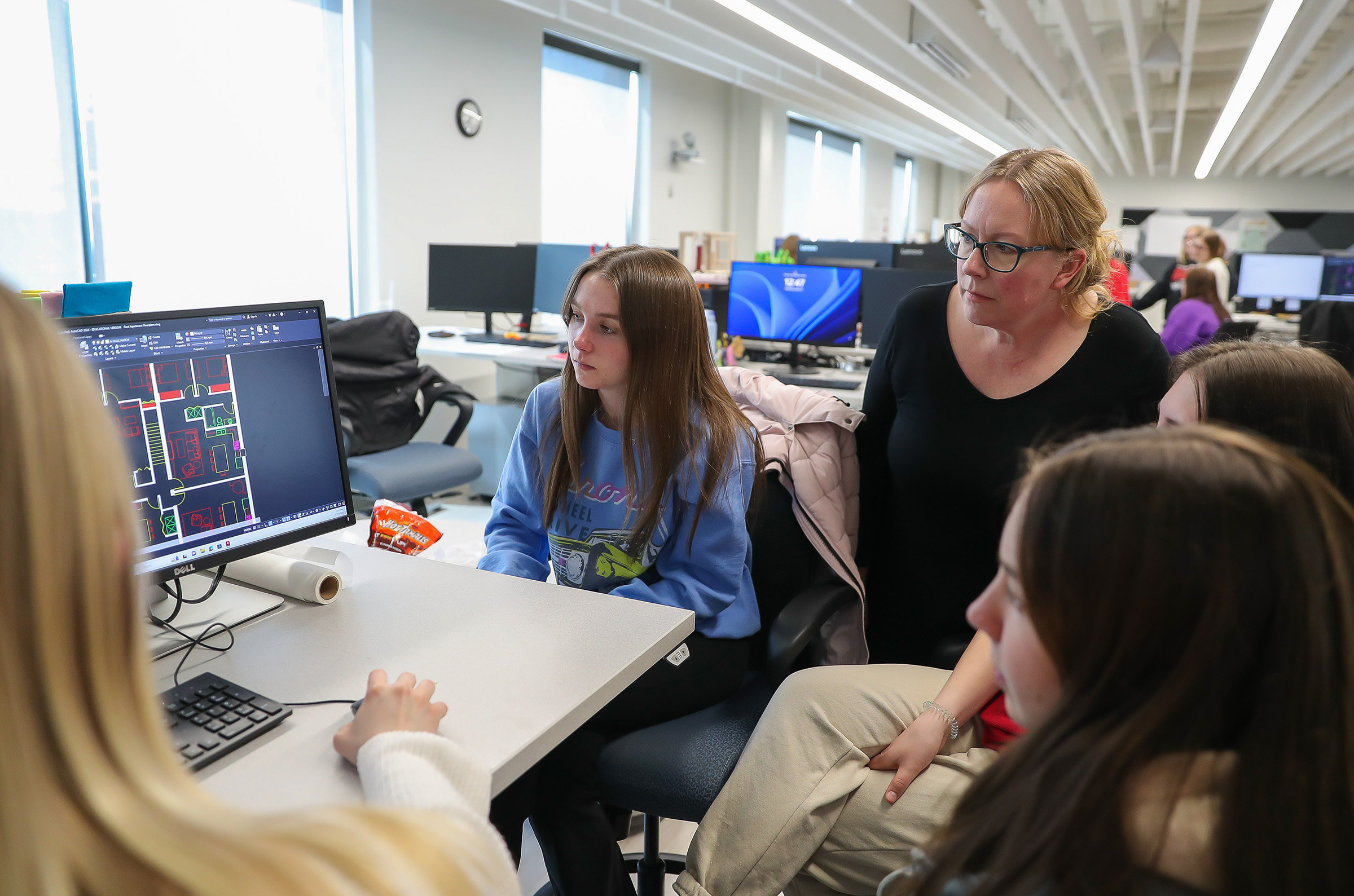![]()

By TYLER ELLYSON
UNK Communications
A faded metal sign still hangs from the building’s exterior, reminding residents of its glory days.
The two-story structure at 613 15th Ave. served the Franklin community for more than 125 years, most notably as Marcellus Furniture, a business that operated there for nearly three decades.
Now, this fixture of the downtown district sits empty, in need of a new life.
“This is a historic building, and it’s still in good shape,” said Margaret Siel, a local accountant who serves as mayor of the small, south-central Nebraska town. “If we ever had to tear it down, it would make our main street look pretty desolate and it would be hard on our community.”
LeAnn Jochum, deputy director of the South Central Economic Development District, likens the loss of a prominent building to a missing front tooth.

“In these small towns especially, there’s nothing that’s going to replace a historic building like this,” she said. “It’s a big, gaping hole that nobody ever fills.”
With bricks falling from the exterior walls, the 136-year-old building was declared a nuisance in 2021. The city of Franklin purchased the property for $1 later that year, with plans to restore and repurpose the space.
“It’s very costly to renovate old buildings, as you can imagine, but it’s also an investment,” Jochum said. “You’re investing in the landscape and the aesthetics and the historical value to a community. That’s why the city wanted to save it.”
Based in Holdrege, the South Central Economic Development District serves 13 counties, focusing on community, housing and business development. The economic development agency is working with officials in Franklin on the Marcellus Building project, with hopes of securing $750,000 from the Nebraska Affordable Housing Trust Fund to cover a portion of the costs.
A third partner is located at the University of Nebraska at Kearney, where students in the interior and product design program are also lending a hand.
MAKING AN IMPACT

Jordan Jablonski grew up in Imperial, located about three hours west of Franklin near the Nebraska, Colorado and Kansas borders.
She and 18 other UNK sophomores in the Design Studio I class, most from small towns, are putting their knowledge into practice to help solve a problem they’re quite familiar with.
“This project hits really close to home because I’m from a small community,” Jablonski said. “Back home, they’re always looking for ways to get people to move back and make the town better. So, I think it’s really cool that they’re trying to get this grant and it’s a really great opportunity for us as students to have an actual client that we’re working for.”
Senior lecturer Becky Hermance and other faculty members in the interior and product design program are constantly searching for “real-world” opportunities for students, particularly those that support central and rural Nebraska. In recent years, they’ve been part of projects in Cozad and Axtell.
“Sometimes these students from rural areas don’t see the ways they can give back to those smaller communities,” Hermance said. “They think they have to go to Omaha or another big city. But their skills can benefit these smaller communities, too.”
In Franklin, they’re addressing an issue that’s common throughout the state – a lack of affordable housing.
“When somebody has a job here in town, it’s always a struggle for them to find a home or even a place to rent,” Siel said. “And sometimes that can impact whether or not they accept a position. We know that we lose people because we don’t have adequate housing.”
A revitalized Marcellus Building represents a win-win for the community of nearly 1,000 residents.

Officials from both Franklin and the economic development district met with Hermance and her students earlier this year to share their vision for the project, then the UNK group made the 50-mile trip south to check out the property.
They’re tasked with designing eight apartments – half two-bedroom and half one-bedroom – that will occupy the building’s second floor and part of the main floor. The first-floor apartments will be handicapped-accessible, with the remaining space dedicated to commercial/community use.
The UNK students were also asked to add a patio/green space and improve the building’s exterior, all while preserving its historic look and feel. They’ve received feedback throughout the process.
“I think that’s really beneficial,” Jablonski said. “It’s not just a free-for-all. This project truly shows us how to work with a client and how the profession will be outside the classroom.”
Hermance sees the same value.
“A project like this helps students develop that adaptability as a designer,” she said. “You’re not going to be able to change the window placement because it’s a historic building and they want them to be original. So, you have to figure out a solution that works. I think it makes them better designers because of the parameters that they’re given.”
The partnership also serves the city of Franklin, which saves thousands of dollars in design fees.
“We’re really thrilled to have UNK on board,” Siel said. “The students have fresh ideas and, of course, the education to back it up. Collaborating with them on this project has made us even more excited because we can feel their excitement.”
PROMISING FUTURE
The UNK students will present their final renderings this Friday, giving city council members about two weeks to pick their favorites before the grant application is due May 9.
A decision on the Affordable Housing Trust Fund recipients is expected to come by September. If Franklin is selected, the community has additional development funds available for the project, which will cost an estimated $1.5 million and require designs from a professional architect. Construction could start as early as January 2025.
“We will have to go forward to get full construction-ready documents, but what the UNK interior and product design class is doing for us is showing readiness,” Jochum said. “They’re able to get us to the finish line of the application and allow us to be competitive. We’re able to show actual renderings, real drawings, of what this building could be and hopefully will be.”
In addition to the experiential learning component, Hermance hopes the project highlights the importance of interior design and the difference it can make “in all areas of life.”
“Sometimes people think of interior design as this high-end, really expensive thing,” she said. “But every space that we design, whether it’s affordable housing or a hospital or school, directly impacts the people within that space. We can make better spaces for everyone.”

For her students, this is a unique opportunity to see one of their projects “come to life.” Jablonski and her classmates plan to follow the progress, and they’re already talking about the possibility of visiting the renovated building when they graduate in May 2026.
“We would all love to see it all the way through,” Jablonski said. “Being able to have something like this in Franklin, a chance for young people to grow in that community, would be awesome for them.”
Siel and Jochum agree.
Along with other improvements and business development, they believe this project signals an “exciting future” for Franklin.
“It’ll be transformational for the community,” Jochum said. “Restoring this huge landmark of a building in their downtown will be impactful on many levels. It’s going to bring vibrancy and life to their downtown by having eight apartments occupied.
“Just imagine a new school teacher or nurse or another young professional, this will be an ideal place for them to call home.”
